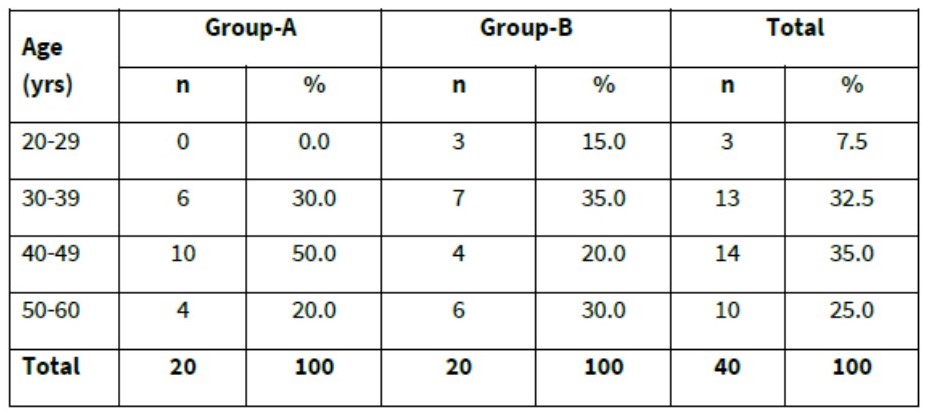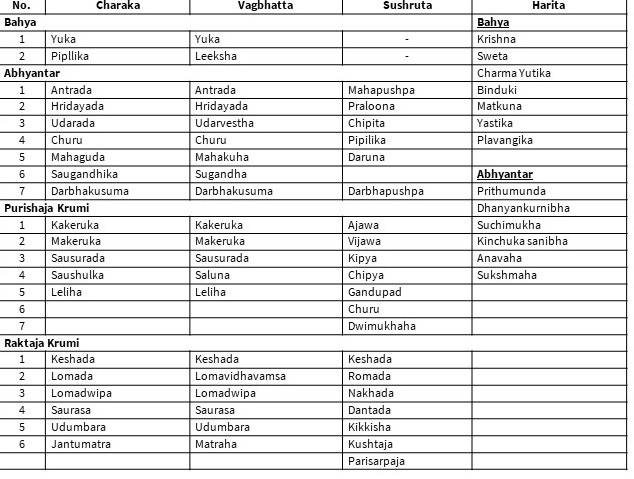Case Report
Year: 2020 |Volume: 1 | Issue: 7 |Pages: 253-258
Integrative Therapy (Naturopathy, Yoga and Ayurveda) Helped in Obesity – A case Study
About Author
Correspondence Address:
Dr. Anuradha Khandekar MGIMS Campus, Warud Road, Sevagram (Wardha) 442102, M.S. Email: arogyadham.seva@gmail.com, Web: arogyadham-seva.com
Date of Acceptance: 2020-10-09
Date of Publication:2020-11-02
Article-ID:IJIM_33_11_20 http://ijim.co.in
Source of Support: NIL
Conflict of Interest: NIL
How To Cite This Article: Anuradha Khandekar, et.al. Integrative Therapy (Naturopathy, Yoga and Ayurveda) Helped in Obesity – A case Study, Int. J Ind. Med. 2020;1(7):253-258
Abstract
The fat may be equally distributed around the body or concentrated on the stomach or midriff (apple-shaped) or the hips and thigh. A 44 yrs. old female from New Delhi was admitted at Arogyadham (Sevagram) for 15 days indoor package for Obesity. The goal of treatment was to reduce weight, to reduce BMI and restore normal health as well as to get detoxification done. Patient given Naturopathy diet plus therapies for first Five days, along with Yoga therapy and Basti as a Panchakarma therapy which includes Anuvasanabasti and Asthapanabasti alternately for next 10 days. At the end of 15 days duration, weight reduced y 6-7 kg. Over all it’s a nice experience for her which not only helped her physically but mentally also.
Keywords: Obesity, Arogyadham, Anuvasanabasti, yoga
Introduction
body mass index (BMI) is between 25 and 29.9 a person is assumed as overweight. The fat may be equally distributed around the body or concentrated on the stomach or midriff (apple-shaped) or the hips and thigh. Asian Indians have more tendency to abdominal obesity and accumulation of visceral fat which is known as “Asian Indian phenotype.1,2 Many studies in India have reported higher prevalence of obesity among women3. One ICMR study presented that the prevalence of obesity (generalized and abdominal) was higher in India now compare to previous studies. The prevalence of central obesity was higher than the generalized obesity and metropolitan habitation had a higher prevalence of both forms of obesity than the rural residency.4
Table no.1 BMI Height Weight Range BMI Considered: -
|
BMI |
Classification |
|
< 18.5 |
Underweight |
|
18.5–24.9 |
Normal weight |
|
25.0–29.9 |
Overweight |
|
30.0–34.9 |
Class I obesity |
|
35.0–39.9 |
Class II obesity |
|
≥ 40.0 |
Class III obesity |
There are three types of Obesity apple, pear & mixed type
Sign and symptoms of Obesity
- Large body frame.
- Difficulty in doing daily activities.
- Lethargy
- Breathlessness
- Disproportionate facial features
- Big belly (abdomen), sometimes marked with white or purple blemishes
- Flabby fat in the upper arms and thighs
- Knock-knees (Genu valgum) is common
In this case study, Naturopathy diet like fresh herbal juices, fruits, whole grains, light diet in the evening helped in reducing over-all fat. Yoga helped in muscle strengthening and toning of the body. Naturopathy treatment gave relaxation and restoring normal health.5 And as a shodhana effect, Basti is very effective in evacuating excessive dosa i.e. fat and thus helped in reducing abdominal fat.6
Case Study:
History of present illness:
A 44 yrs. old female from New Delhi was admitted at Arogyadham (Sevagram) for 15 days indoor package for Obesity. She had increased her weight within last 10- 15 years. Presently her weight was 115.6kg. Patient had history of hypothyroidism, also had back pain, palpitation. There was no history of hypertension, Diabetes -II or any other major illness.
Physical Examination:
When admitted on 10/03/2017 her height was 161.5 cms; weight was 115.6 kg and BMI was 44.46 kg/m2. and BP was 125/85 mmHg; pulse 78 beats/minute; respiratory rate 22 breaths/minute; breath holding time 9 seconds/minute; her main objective behind the visit to Arogyadham was to recover from obesity, to improve her lifestyle, decrease stress and anxiety levels, increase flexibility, improve balance and lose weight.
Treatment at Arogyadham:
The goal of treatment was to reduce weight, to reduce BMI and restore normal health as well as to get detoxification done. We had planned to administer Naturopathy diet plus therapies for first Five days, along with Yoga therapy and Basti as a Panchakarma therapy which includes Anuvasanabasti and Asthapanabasti alternately for next 10 days. So that she could resume her normal routine. Treatment was as follows:

Table No 2 and 3

Table no. 4,5,6
Discussion
Several herbals, mineral and herb mineral medicines are described in various ancient text of Ayurveda for treating Sthaulya. Basti is one of the Panchakarma therapy in Ayurveda. The administration of liquid medicine (oils, Decoction etc.) through the rectal, urethral or vaginal route is collectively referred by the name basti. Depending upon the combination of the herb used during the administration of basti, it can produce Shodhana, Shaman, Brimhana effect in the body. 6 Lekhan anuvasan and asthapan is administered for scraping of the excessive fat. Asana called as stage of being one can remain physically and mentally steady, calm, quiet and comfortable. So comprehensive approach like Basti, Yogasan and diet plan would be very beneficial to reduce obesity without any complications.
Conclusion
The patient has been very cooperative and had willpower to follow the treatment religiously. At the end of 15 days, she got benefitted by the Arogyadham (Naturopathy, Yoga and Bast Treatment). Her weight also started reducing, six to seven kg. weight has been reduced; she has been feeling relief knee pain. She liked the calm and peaceful environment of Arogyadham. Over all it’s a nice experience for her which not only helped her physically but mentally also.
References
value="
- Pandey RM, et al. Determinants of urban-rural differences in cardiovascular risk factor in middle-aged women in India: a cross-sectional study. Int J Cardio. 2013;163;157-62.
- Joshi SR. Metabolic syndrome – emerging clusters of the Indian phenotype. J Assoc Physicians India. 2003; 51:445-62.
- Pandey RM, et al. Determinants of urban-rural differences in cardiovascular risk factor in middle-aged women in India: a cross-sectional study. Int J Cardiol. 2013;163;15-62
- Rajendra Pradeepa, et al. Prevalence of generalized and abdominal obesity in urban and rural India the ICMR – INDIAB Study (Phase-I) [ICMR – INDIAB-3]. Indian J Med Res > v..142(2); 2015 Aug > PMC4613435.
- Book on Yoga and Naturopathy for Holistic Health by CCRYN, Dept. of AYUSH Ministry of Health and Family Welfare, Govt. of India 2010
- Dr. G. Shrinivasa Achrya, Panchkarma Illustrated, Chaukhamba Sanskit Pratishthan, Delhi, first Edition 2013.
"

